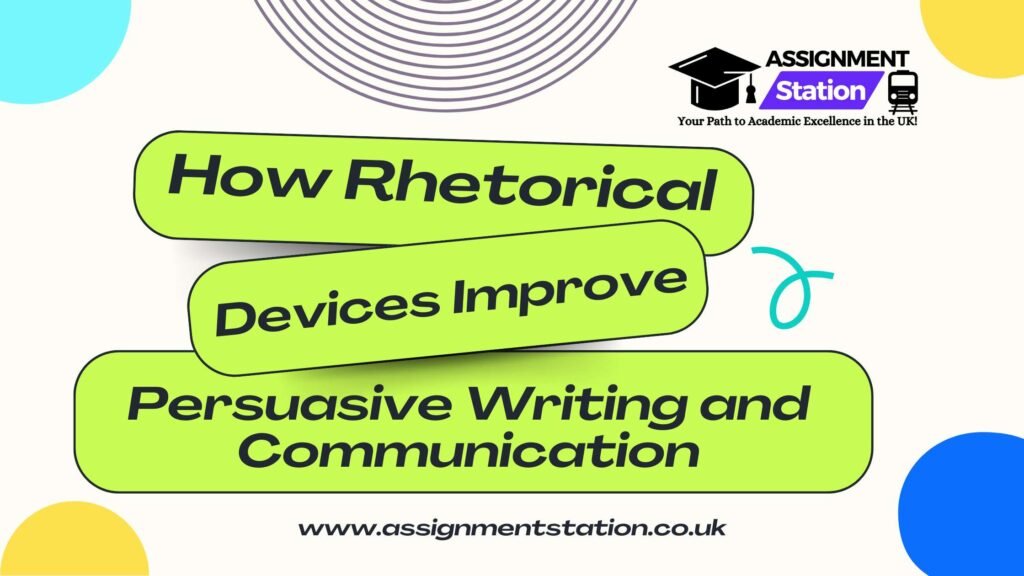Effective communication is the cornerstone of influencing opinions, engaging audiences, and leaving a lasting impact. Whether crafting an essay, delivering a speech, or creating compelling content, rhetorical devices are essential tools. These techniques not only enhance clarity and add emphasis but also make arguments more persuasive. Mastering them can significantly elevate your writing and communication skills.
What Are Rhetorical Devices?
Rhetorical devices are language techniques designed to convey meaning, persuade audiences, and create memorable messages. They are widely used in speeches, literature, marketing, and persuasive writing to make arguments more compelling. By leveraging these techniques, writers and speakers can influence emotions, emphasize key points, and leave a lasting impression on their audience.
Types of Rhetorical Devices in Writing and Communication
There are numerous rhetorical devices, each serving a unique purpose in communication. Below are some of the most effective ones that can enhance your writing and speech:
1. Ethos, Pathos, and Logos
These three classical appeals form the foundation of persuasive writing and argumentation:
- Ethos (Credibility): Establishes the writer’s or speaker’s authority and trustworthiness.
- Pathos (Emotion): Appeals to the audience’s emotions to create a connection.
- Logos (Logic): Uses facts, evidence, and reasoning to support an argument.
2. Metaphor and Simile
Metaphors and similes make comparisons to clarify ideas and add depth to writing.
- Metaphor: Compares two unrelated things by stating one is the other (e.g., “Time is a thief”).
- Simile: Uses “like” or “as” to compare two different things (e.g., “As brave as a lion”).
3. Repetition and Parallelism
Repetition reinforces a point, making it more memorable, while parallelism creates balance and rhythm in writing.
- Repetition: Repeats words or phrases for emphasis (e.g., “We shall fight on the beaches, we shall fight on the landing grounds”).
- Parallelism: Structures sentences similarly for clarity (e.g., “Give me liberty, or give me death!”).
4. Rhetorical Questions
Rhetorical questions engage readers by prompting them to think, even though the answer is implied. For example, “Isn’t it time we took action?” encourages reflection without expecting a direct response.
5. Hyperbole and Understatement
These techniques exaggerate or minimize facts for effect.
- Hyperbole: Uses extreme exaggeration (e.g., “I’ve told you a million times”).
- Understatement: Minimizes the importance of something (e.g., “It’s just a scratch” when referring to a serious injury).
How Rhetorical Devices Enhance Persuasive Writing
Using rhetorical devices strategically makes persuasive writing more engaging and effective. Here’s how they contribute to strong communication:
1. Strengthening Arguments
Logical appeals (logos) ensure that arguments are well-supported with facts and reasoning. When combined with emotional appeals (pathos) and credibility (ethos), they create a powerful message that resonates with the audience.
2. Improving Readability and Engagement
Complex ideas become easier to understand when rhetorical devices are used. Metaphors, analogies, and repetition make content more relatable and enjoyable to read.
3. Creating a Lasting Impact
Memorable phrases stick with the audience. Political speeches, advertisements, and literature often use rhetorical to leave a strong impression.
Examples of Rhetorical Devices in Action
To see rhetorical devices in practice, consider these famous examples:
- Martin Luther King Jr.’s “I Have a Dream” Speech: Uses repetition, parallelism, and metaphors.
- Shakespeare’s Plays: Filled with rhetorical questions, metaphors, and personification.
- Advertising Slogans: Often use hyperbole and alliteration to capture attention.
How to Incorporate Rhetorical Device in Writing
Using this devices effectively requires practice. Here are some tips to integrate them seamlessly into your writing:
1. Identify the Purpose of Your Writing
Determine whether you want to inform, persuade, or entertain. This helps in selecting the right devices.
2. Use Devices Sparingly and Strategically
Overusing this devices can make writing seem forced. Instead, apply them where they enhance clarity and engagement.
3. Test the Impact on Your Audience
Before finalizing content, read it aloud or get feedback to ensure the rhetorical devices strengthen the message.
Why This Devices Matters
Whether writing academic papers, marketing content, or speeches, mastering rhetorical devices improves effectiveness. Understanding what a rhetorical device is and knowing how to apply it enhances clarity, engagement, and persuasion.
Final Thoughts
It play a significant role in persuasive writing and communication. By incorporating these techniques, writers can make their arguments stronger and more memorable. If you want to improve your writing skills further, explore more insights on language techniques and persuasive writing in Assignment Station blogs.
You can transform your communication and leave a lasting impact on your audience. Start practicing today and watch your writing reach new heights!


